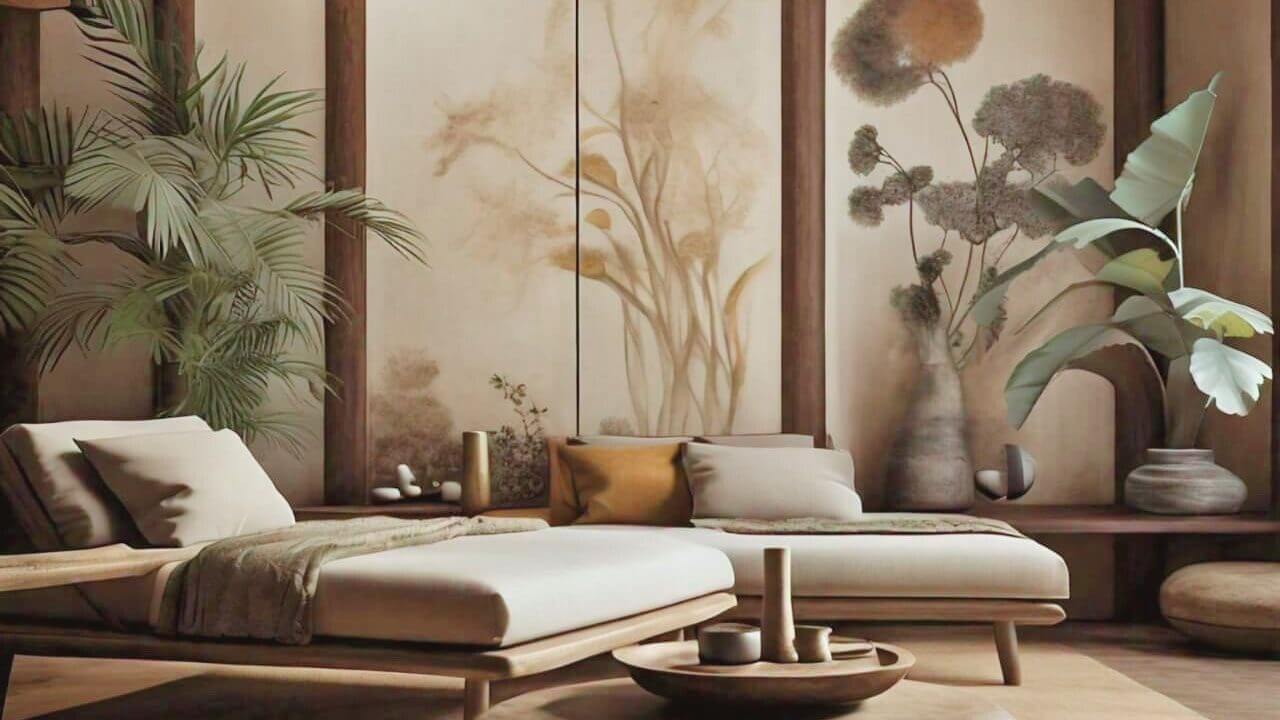Mindful Interior Design: Beauty along with peace, do mindful interior design in your home, office and other happy places.

Mindful interior design : Are you going to build a new house or office? Or you intend to redesign your old house. If so, then you obviously have some ideas in your mind about your new happy place. Furniture, decor, wall colors, bathroom tiles… everything must have been thought of. And when you are going to do something new, then why not think of some new concepts as well. One such concept is Mindful Interior.
Mindful interior design is a concept in which home or office spaces are designed in such a way that they promote mental peace, concentration and productivity. This design approach is not limited to mere aesthetics or decoration, but rather aims to create an environment that positively influences the health of mind and body.
Seven principles of interior design
Even in general, when interior is designed, there is a combination of balance and beauty. Creating beauty and harmony is an art, which is based on special principles. That is why seven major principles have been considered in interior design which are – Balance, Unity, Rhythm, Emphasis, These include Contrast, Scale and Proportion, and Details. If mindfulness is added to these then it
What is mindful interior designing?
Mindful interior designing is a design process whose purpose is not just to enhance beauty. Rather, under this concept, such places are created which along with being beautiful, also promote mental peace, balance and productivity. In this, the place, whether it is home or office, is decorated in such a way that the person gets mental peace and they can work or rest in a better way.
of mindful interior special things
1. colors Of election (Color Psychology) : Colors have a deep impact on mental and emotional state. For example, light and natural colors, such as light blue, green or white promote mental peace and stability. Whereas deep and vibrant colors, like red or orange, awaken energy and inspiration. However, their excessive use can also cause mental stress, so they should be used carefully.
2. Furniture of placement (Furniture Placement) : Having furniture in the right place helps in increasing mindfulness. Ancient disciplines like Vastu Shastra emphasize that furniture should be placed in such a way that the flow of energy is not obstructed. At the same time, open spaces are preferred so that the room feels more organized and light, which reduces stress and increases concentration.
3. Natural lights (Natural Light) : Adequate exposure to natural light enhances mental peace and awareness. Spending time in sunlight has positive effects on mental health, such as reducing stress and improving mood. Having large windows and balanced use of light in a home or office is an important part of a mindful interior.
4. Natural elements Of including (Incorporating Nature) : The use of natural plants and elements creates a calming and refreshing environment. The presence of plants not only cleans the air, but it also reduces mental fatigue. Using organic materials such as wood, stone, and cotton also creates a balanced and natural environment.
5. Sound and fragrance (Sound and Scent) : Sound and aroma also play an important role in calming the mind. Mindful interior design involves arranging music that is slow and relaxing. Also, aromatherapy or using natural fragrances increases mental stability and freshness.
6. personal space Of respect (Respecting Personal Space) : Mindful interior design also ensures that there is enough personal space for every person, be it at home or workplace. This helps maintain mental clarity and personal balance.
There is also a lot of research and expert opinion available on this concept, such as American Psychological Association and Wellness Design Journal, which prove that mental health and productivity can be effectively improved through interior design.


Comments are closed.